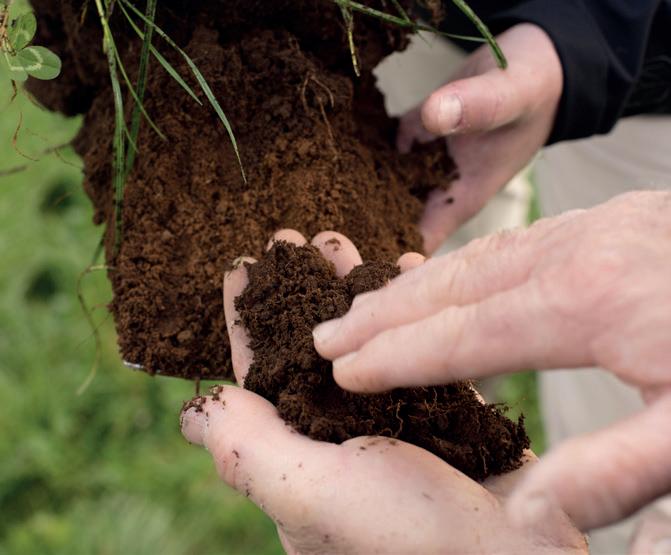
2 minute read
Maintaining soil health
“A single teaspoon of soil is teeming with around 5 billion microbes. But soils can have far fewer microbes than this depending on the soil type, location and what we do to it,” Ballance Agri-Nutrients Forage Specialist Murray Lane says.
“New Zealand is blessed with great, high organic-matter soils. But if we do what others have done and ignore our impacts on soil organisms, our soils are going to look very different someday,” Murray says. Murray cites the example of soils in the mid-west of the United States, which used to have a similar level of organic matter as New Zealand soils (12 to 15 percent) but are now just 2 to 3 percent organic matter. “Misuse has caused this decline. This doesn’t need to happen in New Zealand.” He says monitoring soil health, in order to make any management changes, can help to prevent such a decline. “Monitoring the health of your soils can be relatively easy. Simply take a spade and get started. Dig a few holes and take a few notes on what you see. Graham Shepherd has made the assessment easy by developing a standard scorecard for Visual Soil Assessment. Essentially, you give a score to a range of soil variables, add them up and relate the score to a standard chart. “It is very useful to do a Visual Soil Assessment because you get a comparative number. However, taking the time to dig a hole and see what you see is also a valuable starting point.” Further assessments can give an even greater understanding. “Doing a soil water infiltration test, or a slake test (how well do the soil particles hold together in water) and comparing the target soil to ‘virgin’ soil (e.g. directly beneath a fenceline) on the farm can be quite revealing,” Murray says. “A healthy soil is 25 percent air and 25 percent water. This can be measured with a specially collected sample allowing a true measure of bulk density and soil porosity, which is the presence or absence of air-filled macropores.” Leaving soil undisturbed also helps to maintain and grow your soil. “In recent times it has been tremendous to observe a growing interest in cropping with no-tillage and strip-tillage techniques,” Murray says. This shows that farmers are working to maintain soil health. Keeping soil covered with vegetation, growing a variety of species and maintaining a good level of fertility are also beneficial for soil health. “At $50,000 per hectare, 1.0m2 of healthy topsoil on your farm is valued at $5. If it is compacted, eroded, or lacking organic matter, then it will be worth less than this. More probably, it will not be enhancing your farm’s productivity,” Murray says.
Information on Visual Soil Assessment is available by scanning the QR Code.
| Keeping an eye of soil health is vital to the productivity of your land.
For more information, contact your Ballance Nutrient Specialist, your Farmlands Technical Field Officer, or the friendly team at your local Farmlands store.
Article supplied by Ballance Agri-Nutrients










